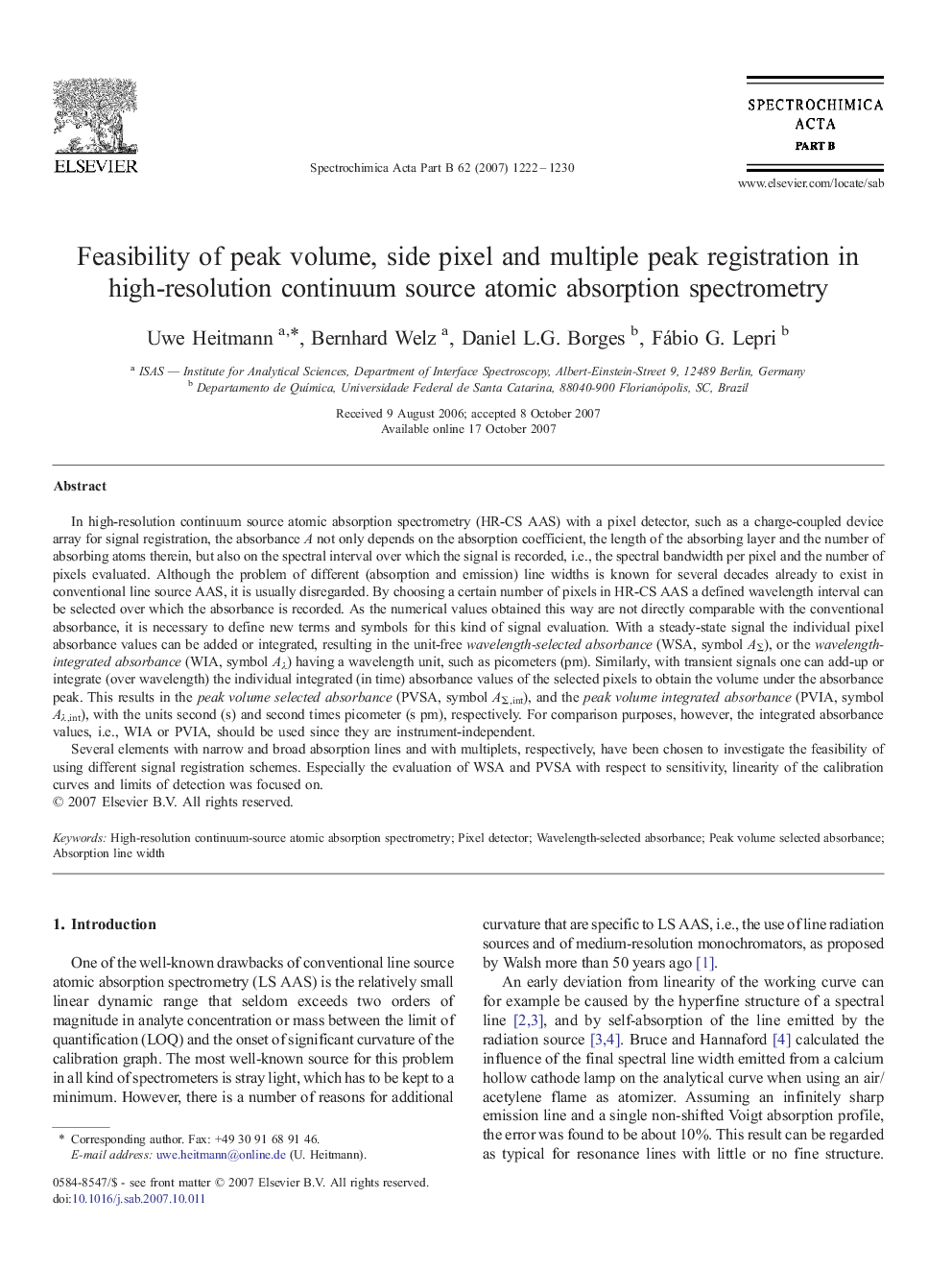| Article ID | Journal | Published Year | Pages | File Type |
|---|---|---|---|---|
| 1240591 | Spectrochimica Acta Part B: Atomic Spectroscopy | 2007 | 9 Pages |
In high-resolution continuum source atomic absorption spectrometry (HR-CS AAS) with a pixel detector, such as a charge-coupled device array for signal registration, the absorbance A not only depends on the absorption coefficient, the length of the absorbing layer and the number of absorbing atoms therein, but also on the spectral interval over which the signal is recorded, i.e., the spectral bandwidth per pixel and the number of pixels evaluated. Although the problem of different (absorption and emission) line widths is known for several decades already to exist in conventional line source AAS, it is usually disregarded. By choosing a certain number of pixels in HR-CS AAS a defined wavelength interval can be selected over which the absorbance is recorded. As the numerical values obtained this way are not directly comparable with the conventional absorbance, it is necessary to define new terms and symbols for this kind of signal evaluation. With a steady-state signal the individual pixel absorbance values can be added or integrated, resulting in the unit-free wavelength-selected absorbance (WSA, symbol AΣ), or the wavelength-integrated absorbance (WIA, symbol Aλ) having a wavelength unit, such as picometers (pm). Similarly, with transient signals one can add-up or integrate (over wavelength) the individual integrated (in time) absorbance values of the selected pixels to obtain the volume under the absorbance peak. This results in the peak volume selected absorbance (PVSA, symbol AΣ,int), and the peak volume integrated absorbance (PVIA, symbol Aλ,int), with the units second (s) and second times picometer (s pm), respectively. For comparison purposes, however, the integrated absorbance values, i.e., WIA or PVIA, should be used since they are instrument-independent.Several elements with narrow and broad absorption lines and with multiplets, respectively, have been chosen to investigate the feasibility of using different signal registration schemes. Especially the evaluation of WSA and PVSA with respect to sensitivity, linearity of the calibration curves and limits of detection was focused on.
